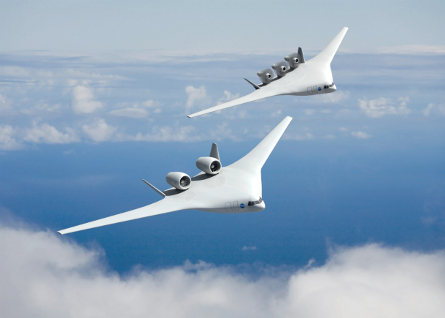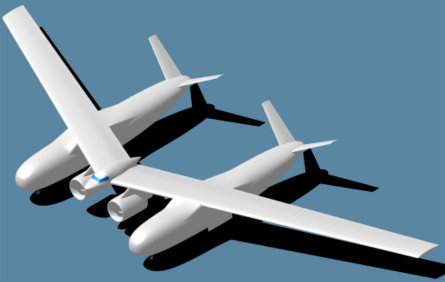NASA has unveiled three concepts for a next-generation widebody airliner that would enter service in 2025 and deliver dramatic reductions in fuel and noise emissions.
The design concepts reveal both two-engine and three-engine versions of the Boeing hybrid wing-body, a Northrop Grumman concept modelled closely on the Scaled Composites White Knight and a Lockheed Martin design featuring a box wing and twin, tail-mounted engines.
NASA has awarded contacts for all three companies to further investigate the unconventional designs. The goal is to develop a single concept into a new X-plane called the "XVT" after 2015, although funding for a flight demonstration is uncertain.
With concerns growing that tube-and-wing airliner configurations are reaching the limits of potential efficiency, NASA commissioned the so-called N+2 design studies under the environmentally responsible aircraft (ERA) programme.
Each of the designs is meant to reach highly ambitious environmental targets within 15 years, such as reducing fuel burn by 40%, nitrous oxide (NOx) emissions by 75% and noise by 42dB.
 |
|---|
©NASA/BoeingThe Boeing concept generates more lift by blending the fueslage and wings together, but requires new advances in low-speed control techniques. |
Northrop, meanwhile, has leveraged the design skills of design partner Burt Rutan's Scaled Composites company, with an aircraft repeating the long wing of the White Knight. Unlike that aircraft, however, the N+2 design trades the w-shape of the White Knight wing for a more conventional v-shape. The configuration includes two long booms to carry passengers or cargo, with twin turbofan engines and a cockpit in between.
 |
|---|
©NASA/Northrop GrummanThe "double fuselage" approach appears to leverage Northrop Grumman's interests in the Scaled Composites White Knight vehicle. |
 |
|---|
©NASA/Lockheed MartinThe box wing aircraft design reflects a new, long-term interest by Lockheed Martin in commercial aviation, which the company abandoned in the early 1990s after the L1011 ceased production. |
Also under the ERA programme, NASA is funding research on new techniques for manufacturing composite structures, controlling laminar flow and improving the efficiency of engine components.
NASA has also funded a programme to study even more advanced designs under the N+3 programme, which aims to develop technologies and airframes that would be ready to enter service after 2035.
Source: Flight International
















